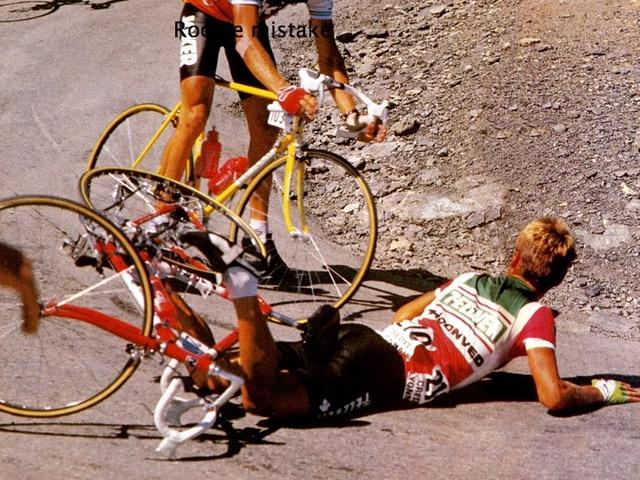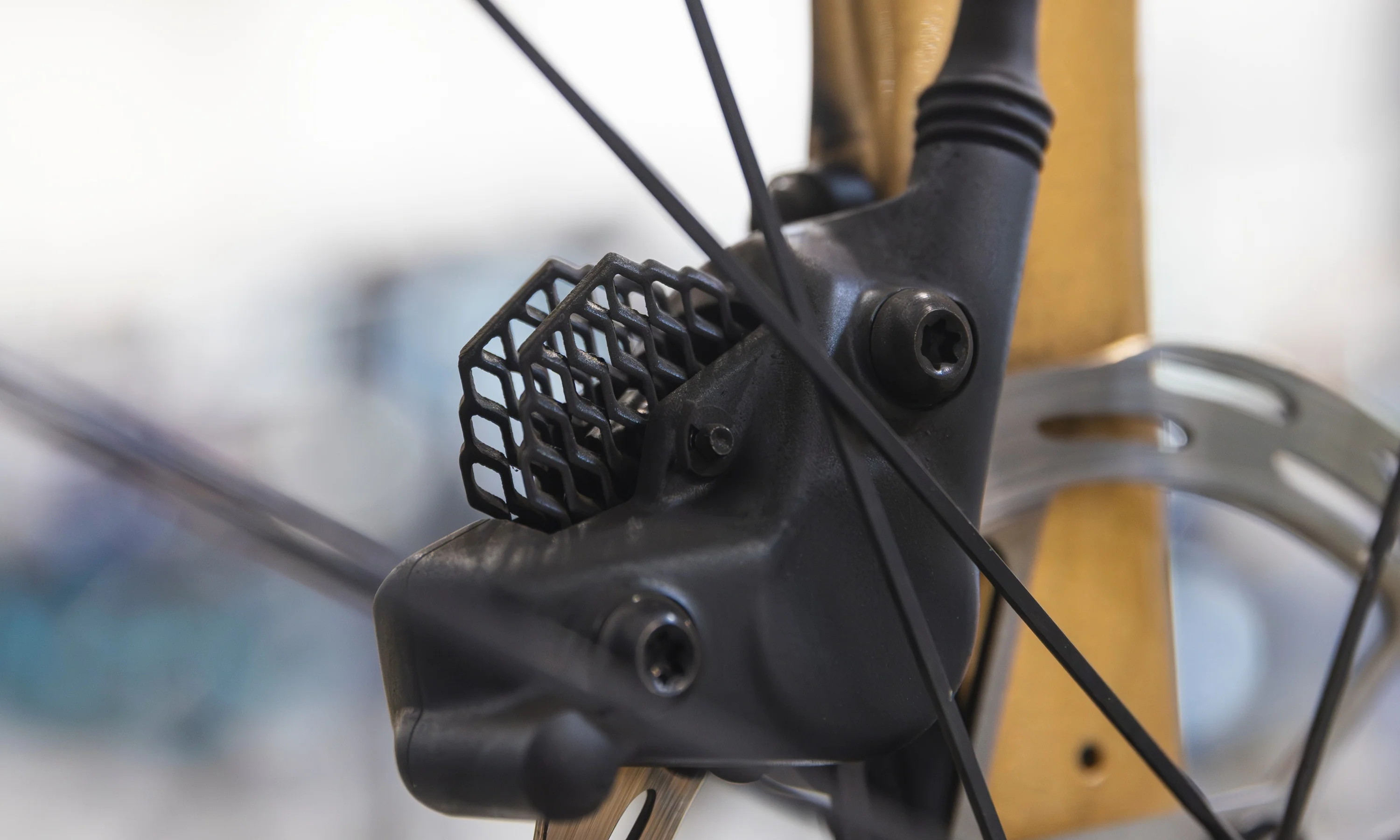Alex Stieda was elated to claim the yellow jersey in his debut Tour de France on the first stage. His team director, Jim Ochowicz (R), was none the wiser that Stieda had secretly brought a carbon bike to race in the 1986 race. Photo: Cor Vos
Alex Stieda was nervous. Hell, the entire 7-Eleven team was nervous. In 1986, they were slated to race the Tour de France. And to the man, all 10 of them, were completely new to the world’s biggest bike race.
“We had no idea,” Stieda told The Pro’s Closet. “Everyone was going in completely raw. We were nervous and excited, but apprehensive.”
So what do you do when you feel underprepared for a potentially career-defining moment? For Stieda, he looked for every advantage he could find, and that meant sourcing a special, secret bike.
“Our bikes were 23 pounds,” Stieda adds. “I’m not a climber, I know that. I just needed every bit of advantage I could get.”
[button]SHOP ROAD BIKES[/button]
Back in the mid-1980s, bike technology had yet to hit the growth curve that popularized technology like carbon fiber, integrated shift/brake levers, aerodynamic wheels, or high-tech apparel. That was all to come in the 1990s. Instead, like most teams, the 7-Eleven outfit relied on equipment designs that hadn’t changed much since the rise of Eddy Merckx — downtube shifters, aluminum rims with worthless brake tracks, and above all, lugged steel frames.
Hoping for an edge on the Pyrenean and Alpine mountains — as yet completely unknown to him — Stieda went shopping. He sourced one of the few carbon fiber bike frames on the market. He took it to a friend in Vancouver who painted it to exactly match the 7-Eleven team’s steel bikes. Then, he handed it off to his trusted team mechanic Rich Gilstrap to build up, when he arrived at the Grand Depart in Boulogne, France that year.
“I didn’t ride the carbon bike until the mountain stages,” Stieda said. “Richie [Gilstrap] didn’t want to have it too exposed. I agreed. Ok, it’s a good idea let’s just keep it in the back of the truck. We had a little pact.”
None of his teammates knew. His team director Jim Ochowicz (now head of the CCC pro team) didn’t know. And certainly his rivals didn’t know.
“Every day, we’d be having coffee with the guys in the start village, the other riders,” Stieda said. “The English speakers usually sat together, and I just so wanted to tell them, but I didn’t want my secret to get out.”
[newsletter]
Fortunately, Stieda had other things to talk about. On stage 1, he became the first North American rider to wear the yellow jersey. Unfortunately, a comedy of errors led to him losing that lead later that afternoon in the team time trial. Nonetheless, it was a strong start for the rookies from across pond.
When Stieda finally got to ride his carbon fiber bike on stage 12, through the Pyrenees to Pau, he couldn’t have been happier.
“I was so desperate to ride it because it was so much lighter,” he said. “Oh yeah, it was totally a noticeable difference. It changed the bike completely.”
However, his secret carbon frame met an end almost as ignominious as Stieda’s stint in the yellow jersey. On stage 18 to l’Alpe d’Huez, descending the Col du Galibier mid-stage, he crashed and the frame cracked.
“I crashed on the first hairpin of the Galibier,” he recalls. “Whether the crash caused the crack in the chainstay, or the crack caused the frame to flex and cause the crash, I don’t know. Rich [Gilstrap] looked at the frame at the end of the day, and said, ‘Alex we have to throw this out.’ He didn’t want to have it around so people could find out about it.” 
Stieda's crash at the top of the Galibier spelled the end of his secret carbon-fiber bike. Photo: Miroir du Cyclisme
Stieda can’t quite recall which company actually made his secret carbon fiber frame. There’s a good chance it came from French manufacturer TVT. In addition to making its own frames, TVT provided carbon tubes to Look for its KG86, a carbon bike ridden by another North American pioneer at the 1986 Tour, Greg LeMond.
LeMond and his La Vie Claire team rode the KG86 alongside Stieda in that Tour. The American went on to win his first Tour, and the first for an American after a pitched battle with his own teammate, five-time yellow jersey winner, Bernard Hinault.
La Vie Claire embraced technological advantages like that carbon frame, which was uncommon in that era. Stieda said that 7-Eleven’s upstart status allowed him to sneak a secret weapon into the world’s biggest race.
[product-block handle="look-695-heritage-edition-l"/]
“If I was on a European team there’s no way I would have tried to get away with that,” he said.
“We were the freakshow from the U.S.,” Stieda said in an earlier interview. “Och [Ochowicz] and the team realized that technology could be something that could help us.”
Even when it came to his kit, Stieda turned heads by wearing a skinsuit in the Tour’s first road stage after the opening-day prologue. Maybe he wasn’t so crazy, because even without his secret carbon frame, that was the race where he earned the yellow jersey.
“That was a small thing, but it was another example of riders like myself not being afraid to take chances and do something different,” he added. “It’s a small thing, but in the grand scheme of things, it’s significant. We didn’t have to adhere to all of tradition.”
[button]SHOP ROAD BIKES[/button]

























